
China


AFD China Intellectual Property Law Office

AllBright Law Offices
An, Tian, Zhang & Partners

AnJie Broad Law Firm

Anli Partners

Appleby

Ashurst

Baker McKenzie FenXun
Beijing Docvit Law Firm

Beijing Grandway Law Offices

Bird & Bird

CCPIT Patent and Trademark Law Office
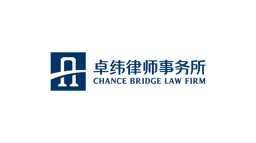
Chance Bridge Law Firm
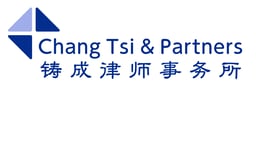
Chang Tsi & Partners

City Development Law Firm

Cleary Gottlieb Steen & Hamilton
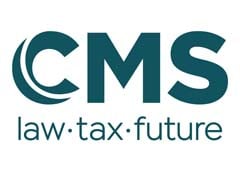
CMS

Commerce & Finance Law Offices

Curtis, Mallet-Prevost, Colt & Mosle LLP

Dacheng
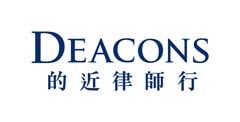
Deacons

Dehehantong Law Office
RGB显示-01.jpg)
DeHeng Law Offices

DLA Piper

Dorsey & Whitney LLP

Duane Morris & Selvam LLP
East & Concord Partners

Fangda Partners

FenXun Partners
GEN Law Firm

Gide Loyrette Nouel A.A.R.P.I.
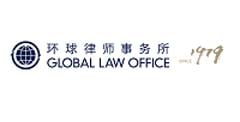
Global Law Office

Gowling WLG

Grandall Law Firm

Greenberg Traurig
Guangsheng & Partners PRC Lawyers
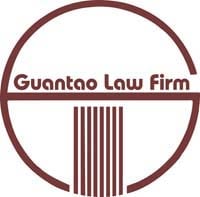
Guantao Law Firm

Guozun Cathay Associates
Hai Run Law Firm
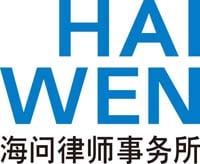
Haiwen & Partners
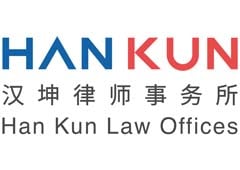
Han Kun Law Offices
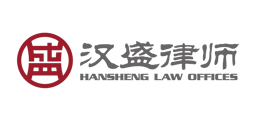
Hansheng Law Offices

Harvesting Law Firm

Hengtai Law Offices

HFG Law Firm & IP Practice

HHP Attorneys-At-Law

Hogan Lovells International LLP
Hong Fang Law
Hui Ye Law Firm

Hylands Law Firm
JianLingChengDa Law Firm

Jincheng Tongda & Neal
Jingtian & Gongcheng

Johnson Stokes & Master
Joint-Win Partners

Jones Day

JunHe

JunZeJun Law Offices

K&L Gates
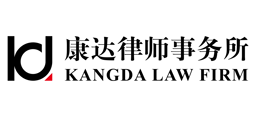
Kangda Law Firm

Kangxin Partners, p.c.

Katten

King & Capital Law Firm

King & Wood Mallesons

Kirkland & Ellis International LLP

Latham & Watkins LLP

Lifang & Partners

Liu, Shen & Associates
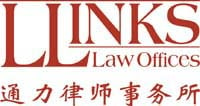
Llinks Law Offices
Long An Law Firm

Merits & Tree Law Offices

Morgan Lewis & Bockius LLP

Mori Hamada & Matsumoto Shanghai Office

Morrison Foerster

Nagashima Ohno & Tsunematsu Shanghai Representative Office

Nishimura & Asahi

Norton Rose Fulbright

Ogier

Orrick, Herrington & Sutcliffe LLP

Osborne Clarke

Paul, Weiss, Rifkind, Wharton & Garrison LLP

Pillsbury Winthrop Shaw Pittman LLP

Proskauer Rose LLP

PW & Partners

Quinn Emanuel Urquhart & Sullivan, LLP

Ropes & Gray LLP
SGLA Law Firm

Shanghai Pacific Legal
Shihui Partners

Sidley Austin LLP

Simmons & Simmons

Simpson Thacher & Bartlett LLP

Stephenson Harwood

Steptoe LLP

T&C Law Firm
Tahota Law Firm

Tian Yuan Law Firm
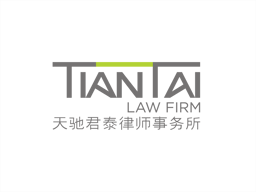
Tiantai Law Firm

TianTong Law Firm

Tiger Partners

Topcom China Law Offices
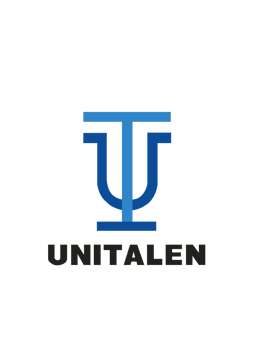
Unitalen Attorneys at Law

V&T Law Firm
W&H Law Firm

Wang Jing & Co

Wanhuida Intellectual Property
Wei Tu Law Firm

White & Case LLP, Shanghai Office

Wikborg Rein

Winston & Strawn LLP

Wintell & Co Law Firm
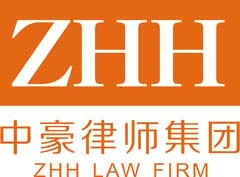
ZHH & Robin LLP

Zhong Lun Law Firm
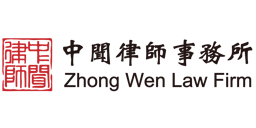
Zhong Wen Law Firm

Zhong Yin Law Firm
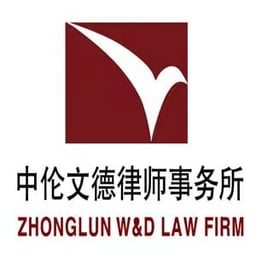
Zhonglun W&D Law Firm
Firms in the Spotlight

Chang Tsi & Partners
Chang Tsi & Partners is a "National Outstanding Law Firm" (nominated by the Ministry of Justice of China) with a strong reputation in intellectual property and litigation.
Since its

Kangxin Partners, p.c.
Since its establishment in 1994, Kangxin has grown into a leader amongst IP law firms in China, with offices in Beijing, Tianjin, Qingdao, Xi’an, Wuhan, Hangzhou and Guangzhou. Our client base include

CCPIT Patent and Trademark Law Office
CCPIT Patent and Trademark Law Office is the oldest and one of the largest full-service intellectual property law firms in China. The firm has 322 patent and trademark attorneys, with 100 qualified at
Interviews
View
Spring Chang, Managing Partner
Chang Tsi & Partners

Chuanhong Long, President
CCPIT Patent and Trademark Law Office

Zhang Liguo, Chief Partner
Beijing Grandway Law Offices

Spring Chang, Founding Partner
Chang Tsi & Partners

Chuanhong Long, President, CCPIT Patent and Trademark Law Office
CCPIT Patent and Trademark Law Office

周吉高Jigao Zhou , 主任律师Managing Partner
JianLingChengDa Law Firm

Liguo Cui, Managing Partner
Guantao Law Firm
News & Developments
ViewPress Releases
Appleby Expands Dispute Resolution Expertise in Greater China with Appointment of Alvin Sin as Partner in its Shanghai office
Appleby is pleased to welcome seasoned litigator Alvin Sin, who will be joining our Shanghai office as Partner and our Hong Kong office as Legal Manager, effective 30 June 2025. This key appointment underscores Appleby’s commitment to strengthening our presence in Greater China, enabling us to offer an even broader range of commercial dispute resolution services tailored to meet the evolving needs of our clients, and deepening our capabilities in handling complex cross-border disputes.
Alvin brings over a decade of experience in corporate, commercial, and regulatory disputes across Asia. He has a track record representing clients in high-value arbitration, litigation, regulatory matters and corporate investigations, with a particular focus on the financial services, biopharmaceuticals, technology, professional services and real estate sectors. Alvin regularly advises investment banks, multinational corporations and professional services firms on regulatory and compliance matters.
Prior to joining Appleby, Alvin spent more than 10 years at a leading US law firm in Hong Kong and several years at a leading Chinese-Australian law firm. Fluent in English, Cantonese, and Mandarin, Alvin offers deep regional market expertise, helping clients navigate cross-border disputes involving offshore jurisdictions.
David Bulley, Appleby’s Hong Kong and Mainland China Managing Partner, commented, "We are delighted to welcome Alvin as we continue to expand Appleby’s dispute resolution practice in Greater China. With every change that we make to the Hong Kong and Shanghai teams we are looking to continue to improve our offering for clients. Alvin’s combination of legal expertise and Chinese language and commercial insight significantly enhances our offering for Mandarin and Cantonese speaking Hong Kong and Mainland China clients and positions us to better support clients facing complex cross-border disputes."
Eliot Simpson, Appleby’s Hong Kong Head of Dispute Resolution, added, "With Alvin’s arrival, Appleby enhances its ability to provide comprehensive dispute resolution services, spanning high-stakes litigation across multiple offshore finance jurisdictions. Our team remains dedicated to delivering strategic, commercially driven solutions for financial institutions, professional services firms, and multinational corporations operating across Asia and beyond."
Reflecting on his new role at Appleby, Alvin said, “I am excited to be joining Appleby and to play a part in the firm’s continued growth across the region. I’m looking forward to collaborating with my colleagues to help clients navigate legal complexities and find effective solutions to their disputes.”
With this appointment, Appleby reaffirms its dedication to providing comprehensive, client-centric solutions for complex disputes throughout Asia and beyond.
_________________________________________________________________
毅柏律师事务所任命冼雋杰为上海办公室合伙人,进一步增强大中华区争议解决业务实力
毅柏欣然宣布,资深诉讼律师冼雋杰(Alvin Sin)将于 2025 年 6 月 30 日正式加入本所,出任上海办公室合伙人及香港办公室法律经理。此项重要任命彰显了毅柏持续拓展大中华区业务版图的承诺,进一步巩固了我们为客户提供量身定制商事争议解决方案的能力,并强化了本所应对复杂跨境争议的专业实力。
冼律师在亚洲拥有逾十年处理公司、商事及监管争议的丰富经验,在高额仲裁、诉讼、监管事务及企业调查方面屡获佳绩,尤为专注于金融服务、生物医药、科技、专业服务及房地产等行业。他长期为投行、跨国企业及专业服务机构提供有关监管与合规的法律建议。
在加入毅柏之前,冼律师曾于香港一家知名美国律所服务逾十年,并曾任职于一家享有盛誉的中澳合资律所。他精通英语、粤语及普通话,熟悉亚洲法律市场,为客户处理涉及离岸司法管辖区的跨境争议提供独到见解。
毅柏香港及中国大陆区管理合伙人布泰玮(David Bulley)表示:“我们非常欢迎冼律师的加入,他的加入标志了毅柏持续深耕大中华区争议解决业务的决心。毅柏在香港及上海走过的每一步脚印,都是为了进一步提升我们为客户提供的专业服务。冼律师能够结合法律专业、中文语言能力及商业洞察,加强我们为普通话及粤语客户提供服务的能力,也让我们在应对复杂跨境争议时更具优势。”
毅柏香港争议解决业务主管冼耀仁( Eliot Simpson) 补充道:“冼律师的加入,使我们在多个离岸金融法域提供高端诉讼服务的能力更上一层楼。我们的团队将继续致力于为金融机构、专业服务公司及跨国企业提供战略性与商业导向兼备的争议解决方案,覆盖亚洲及更广泛地区。”
谈及加入毅柏,冼律师表示:“我非常高兴能够加入毅柏,并参与毅柏在亚太地区的持续拓展。我期待与同事们携手合作,协助客户应对法律挑战,并为其争议提供高效务实的解决方案。”
此次任命再次印证了 毅柏致力于在亚洲及更广泛地区提供全方位、以客户为中心的复杂争议解决方案的承诺。
Appleby - June 24 2025
Enforcement Mechanism: Obtaining Reliefs across Multiple Jurisdictions
Enforcement mechanisms are particularly complicated in a multi-jurisdiction context.
Different jurisdictions have distinct legal systems, principles of law and enforcement rules, leading to legal conflicts and uncertainties in the enforcement process. This article introduces the recognition and enforcement of foreign arbitral awards and court judgments in the People’s Republic of China (“China”), analyzes the interaction among domestic law, foreign law and international law, and proposes suggestions for facilitating cross-border enforcement.
I. Recognition and Enforcement of Foreign Arbitral Awards
Arbitration is a method of dispute resolution, where parties voluntarily submit their disputes to an independent arbitral tribunal for adjudication in accordance with an arbitration Thanks to the Convention on the Recognition and Enforcement of Foreign Arbitral Awards (also known as New York Convention), arbitration has become a mainstream way to resolve cross-border disputes. Since the contracting parties to New York Convention cover most countries and regions, foreign arbitral awards are recognized and enforced in China mainly relying on New York Convention.1
Chinese courts once reviewed foreign arbitral awards by reference to the legislative notions of Chinese Arbitration Law, such as determining the nationality of an award based on the
location of the arbitration institution that made the award2, and applying Chinese Arbitration Law to deny the validity of an ICC (International Chamber of Commerce) arbitration clause3. With the adoption and deepening of the concept of "facilitating awards enforcement", Chinese courts actively follow the evolution trend of international commercial arbitration and fill the gaps in domestic arbitration legislation. More and more foreign awards have been recognized and enforced in China. According to the Annual Report on Judicial Review of Commercial Arbitration by the Supreme People's Court (2023), Chinese courts recognized and enforced 69 foreign awards during the year of 2023, a year-on-year increase of 16.9%, and the arbitration-friendly judicial environment is highly appreciated.
In practice, recognition and enforcement of foreign awards still confront some challenges. For example, the importance of preservation measures is self-evident as it can prevent the respondent from dissipating assets to evade an unfavorable award. However, as for foreign arbitration proceedings, only in those seated in Hong Kong or Macau can parties apply to mainland courts for preservation measures. Besides, parties to foreign-seated arbitrations often apply to the arbitral tribunal to issue interim measures, requiring the respondent to perform or refrain from specific actions. At present, there are no relevant legislation and judicial practice on whether such interim measures can be recognized and enforced in China.
It is worthy of expectation that Chinese Arbitration Law is under the process of amendment. According to the Arbitration Law of the People's Republic of China (Revision) (Draft for Comments) released by the Ministry of Justice, this revision will summarize previous successful experience, deal with practical problems, keep in line with international best practices, optimize arbitration procedures, and enhance the international credibility and competitiveness of arbitration in China. It can be foreseen that China will deepen international cooperation with a more open and inclusive attitude and strive to build a more just, efficient and convenient system for recognizing and enforcing foreign arbitral awards.
II. Recognition and Enforcement of Foreign Court Judgments
Due to the lack of judicial mutual assistance arrangements between China and most countries, foreign court judgments are recognized and enforced in China mainly based on the principle of reciprocity. 4When applying this principle, Chinese courts need to determine whether there is a reciprocal relationship between China and the country where the judgment was Regarding this issue, Chinese judicial practice undergone a shift from "examining whether Chinese court judgements have been recognized and enforced in this foreign country before"5 to "examining whether Chinese court judgments could be recognized and enforced under the law of this foreign country" 6. This shift has increased the possibility of foreign judgments to be recognized and enforced in China.
Chinese courts also need to consider whether recognition and enforcement of a foreign judgment matches Chinese legal principles and public interests, as well as whether there are
fraud, false litigation and other irregularities.7In judicial practice, judgment debtors rarely invoked such requirements to persuade the court to refuse recognition and enforcement. However, in the case of (2019) Yue 01 Xie Wai Ren No. 3, a local court in Guangzhou province denied the punitive damages awarded in a U.S. judgment that largely exceeded the actual losses. The reason for this refusal is generally considered to be that punitive damages violate a basic principle of Chinese law, i.e., civil and commercial damages are usually limited to actual losses.
In brief, when recognizing and enforcing foreign judgments, China strives to balance efficiency and fairness by many means, such as clarifying review standards, standardizing application processes, reasonably determining reciprocal relationships, and strictly applying the causes for non-recognition and non- enforcement. This contributes to promoting international judicial cooperation while resolutely safeguarding China's judicial sovereignty, the legitimate rights and interests of parties and public interest.
III. Interaction among Domestic law, Foreign Law and International Law
Two cases are briefly summarized below to illustrate how Chinese courts review the application for recognizing and enforcing foreign arbitral awards and judgments:
In the case of (2018) Hu 01 Xie Wai Ren No. 23, the court first found that the arbitral award in question was made in Singapore and therefore applied New York Convention to review the recognition and enforcement issues. Regarding the respondent's objection to validity of the arbitration clause, the court applied the judicial precedent of the Court of Appeal of Singapore and ruled that the arbitration clause was valid. The court then decided to recognize and enforce the arbitral award. In the case of (2018) Hu 72 Xie Wai Ren No. 1, the court first found that China and the UK had not concluded or participated in any international convention on mutual recognition and enforcement of civil and commercial court judgments. The principle of reciprocity was thus used as the legal basis. The court considered the possibility of Chinese judgments being recognized and enforced under English law and accepted the existence of a reciprocal relationship between China and the UK. Finally, the court rejected the grounds for non-recognition
and non-enforcement raised by the respondent, and recognized and enforced the UK judgement.
From the above examples, it can be seen that cross-border enforcement involves complex interactions among domestic law, foreign law and international law. Domestic law provides a basic legal framework and rules for the enforcement process. When reviewing the application for recognition and enforcement, Chinese courts may need to ascertain and apply foreign laws. International law stipulates the rights and obligations of different countries towards each other in the context of cross-border enforcement. Understanding and mastering these three different legal systems poses huge challenges to all parties involved.
Facing this reality, the applicant for enforcement should consider enforcement issues from the beginning of cross- border transactions to reduce risks by good preparation. Critical issues include: shall the parties choose arbitration or litigation as the dispute resolution method? If arbitration is preferred, which country should be chosen as the seat of arbitration? Is the country where the counterparty's assets are located a contracting party to New York Convention? If litigation is selected, which court shall be chosen to hear the dispute? Has the country where the counterparty's assets are located signed a mutual legal assistance treaty or established a "reciprocal relationship" with China?
Author: Zongnan Wu
Footnotes
1 At the 18th meeting of the Standing Committee of the Sixth National People's Congress on December 2, 1986, it was decided that the People's Republic of China should accede to the Convention on the Recognition and Enforcement of Foreign Arbitral Awards and declared at the same time that: (1) the People's Republic of China should apply the Convention only on the basis of reciprocity to the recognition and enforcement of arbitral awards made within the territory of another contracting country; and (2)the People's Republic of China only applies this convention to disputes arising from commercial legal relationships that are deemed contractual or non-contractual under the laws of the People's Republic of China.
2. In 2004, the Supreme People's Court replied to the Shanxi Provincial High Peo- ple's Court regarding the application of the parties to recognize and enforce the arbitral award made by the International Chamber of Commerce Arbitration Court in Hong Kong, stating that the International Chamber of Commerce Arbi- tration Court is a French arbitration institution so that such award shall be made in
3. Reply of the Supreme People's Court to the Request for Confirmation of the Validity of the Arbitration Agreement between Zublin International GmbH and Wuxi Woke General Engineering Rubber , Ltd. [(2003) Min Si Ta Zi No. 23].
4. Article 299 of the Civil Procedure Law: Having received an application or a request for recognition and execution of a legally effective judgment or ruling of a foreign court, a people's court shall review such judgment or ruling pursuant to international treaties concluded or acceded to by the People's Republic of China or in accordance with the principle of reciprocity. If, upon such review, the people's court considers that such judgment or ruling neither contradicts the basic principles of the law of the People's Republic of China nor violates State sovereignty, security and the public interest, it shall rule to recognize its effec-tiveness. If execution is necessary, it shall issue an order of execution, which shall be implemented in accordance with the relevant provisions of the Law. If such judgment or ruling contradicts the basic principles of the law of the People's Republic of China or violates State sovereignty, security or the public interest, the people's court shall refuse to recognize and execute the judgment or ruling.
5 In the Civil Ruling (2016) Su 01 Xie Wai Ren No. 3, Nanjing Intermediate People's Court of Jiangsu Province recognized and enforced the civil judgment of the Singapore court because the Singapore High Court had previously enforced the civil judgment of the Chinese court.
6 In the Civil Ruling (2018) Hu 72 Xie Wai Ren No. 1, Shanghai Maritime Court pointed out that if civil and commercial judgments made by Chinese courts can be recognized and enforced by courts of a foreign country, it can be determined that there exists a reciprocal relationship between China and that country.
7 Article 300 of the Civil Procedure Law stipulates that in any of the following circumstances, a ruling shall be made not to recognize and enforce a judgment made by a foreign court: (1) According to Article 301 of this Law, the foreign court has no jurisdiction over the case; (2) The respondent has not been lawfully sum- moned, or although lawfully summoned, has not been given a reasonable op- portunity to present or argue, or the party without legal capacity for litigation has not been properly represented; (3) Judgments and rulings were obtained through fraudulent means; (4) The people's court has already made a judgment or ruling on the same dispute, or has recognized a judgment or ruling made by a third country court on the same dispute; (5) There is violation of the basic principles of the laws of the People's Republic of China or harming national sov- ereignty, security, and public interests.
V&T Law Firm - February 7 2025
Guidelines on Disputes about Claims Caused by False Statements in the Securities Market
1. Legal Basis of Disputes about Claims Related to False Statements in the Securities Market
1.1 Laws
According to the mainstream views in both theoretical and practical law areas of Chinese mainland, false statements in the securities market constitute a specific type of act of tort. Therefore, the elements of such acts and the determination of legal liabilities are governed by both the general provisions on "Tort Liability" in the Civil Code of the People’s Republic of China (referred to as the “Civil Code”) (the seventh edition) and special provisions of the Securities Law of the People’s Republic of China (referred to as the “Securities Laws”). The Securities Laws, as a special law, should take precedence over the general law -the Civil Code. In cases where the "Securities Laws" do not have relevant provisions, the provisions of the Civil Code shall apply.
The provisions on tort liability for false statements under the Securities Laws are mainly found in Article 85, which states: "Where any persons liable for information disclosure fail to disclose information in accordance with the regulations, or where the announced securities issuance documents, periodic reports, interim reports, and other information disclosure materials contain false records, misleading statements or material omissions, causing any losses to investors insecurities transactions, the persons liable for information disclosure shall be liable for compensation; the controlling shareholder, actual controllers, directors, supervisors, officers and other directly responsible persons of the issuer, as well as the sponsor, underwriting securities company and their directly responsible persons, shall bear joint and several liability with the issuer, except for those who can prove their innocence."
1.2 Judicial interpretation
The securities market features publicity and non-face-to- face transactions. False statements in the securities market constitute a specific type of act of tort, with significant differences from ordinary acts of tort. Publicly listed companies made false
statements stand a dominant position compared to ordinary investors. Adjudicating such cases in accordance with the general provisions of "Tort Liability" in the Civil Code would burden the plaintiff disproportionately in terms of proving causation, leading to unfair trial outcomes. The provision in Article 85 of the Securities Laws is overprincipled and cannot be used to address those specific issues in the security market. In view of this, the Supreme People’s Court issued judicial interpretations specifically addressing the application of Article 85 of the Securities Laws in case trials. The judicial interpretation was enacted in 2013 (referred to as the "Old Judicial Interpretation") and underwent a comprehensive revision in 2022 (referred to as the "New Judicature Interpretation").
2. Key issues involved in the claims dispute by false statements insecurities market
2.1 Determination of false statements
Listed companies shall bear the responsibility of disclosing information comprehensively and accurately, which forms the basis of achieving fairness, justice and transparency in the securities market. Chapter VII, Special Chapter of the Securities Laws, stipulates the subjects, requirements for performance, regulatory authorities, and other aspects regarding information disclosure obligations in the securities market. However, violation of the information disclosure obligations under the Securities Laws does not automatically constitute civil liability in terms of tort of false statement. Article 4 and 5 of the New Judicature Interpretation provide definitions of false statements and specific manifestations.
In accordance with the provisions of Article 2 of the New Judicature Interpretation, if a plaintiff initiates such a lawsuit, he bears the burden of establishing that the defendant has engaged in false statement conduct. In practice, due to the inherent concealment of false statements, such conduct is often made public only after regulatory authorities have taken notice of or imposed penalties, or following coverage by the media. The plaintiff needs to rely on regulatory decisions or media reports as evidence to demonstrate the defendant's false statement conduct. When determining whether false statement conduct has occurred, the court often considers whether the defendant's actions have already been subject to regulatory measures or administrative penalties by the regulator. Generally, if these circumstances exist, the likelihood of the defendant's actions being deemed to constitute false statements significantly increases.
2.2 Implementation date, disclosure date, base date, and base price of false statements
2.3 If the defendant's conduct is deemed to constitute false statements, to determine the scope of the plaintiffs who can file a claim, it is necessary to establish the implementation date, disclosure date, base date, and base price of the false statements (referred to as the "Three Dates and One Price"). Articles 7, 8, and 26 of the New Judicature Interpretation provide specific provisions on how to define the "Three Dates and One Price".
In the context of the "Three Dates and One Price," the determination of the disclosure date is especially crucial. On the one hand, the disclosure of false statements often occurs as a process involving multiple factors such as market rumors, media reports and regulatory interventions, and the exact point to be considered as the disclosure date remains disputed; on the other hand, the determination of the disclosure date is closely related to whether the false statements are significant and the scope of plaintiffs who can file a claim, significantly impacting the final substantive outcome of the case. Amid the combined effects of these two factors, the determination of the disclosure date becomes the focus of dispute between the parties throughout the adjudication process of such cases.
2.4 Materiality of false statements
The materiality of false statements is a prerequisite for the defendant to bear liability for false statements. Therefore, the issue of materiality often becomes the focal point of dispute between the parties in such cases. In particular, following the revision of the New Judicature Interpretation in 2022, the plaintiff is no longer required to establish that a defendant has previously been subject to administrative or criminal penalties for false statements before initiating such litigation. In cases where false statements have not led to administrative or criminal sanctions, disputes over the materiality of false statements have gradually become more complex.
In theory, the judgment of materiality is subject to both subjective and objective criteria. Subjective criteria refer to the impact of false statements on investors' investment decisions. Objective criteria, on the other hand, focus on the impact of false statements on the trading price and volume of the relevant securities. According to Article 10 of the New Judicature Interpretation regarding materiality, when courts analyze and assess materiality issues, besides referring to statutory provisions,
the fundamental criterion is the response of the securities market to the disclosure of false statements, which constitutes the objective standard. In judicial practice, courts typically consider the changes in trading volume and prices for the disclosure day and several subsequent trading days. However, the specific criteria for determining "significant changes in the trading price or volume of the relevant securities" are not definitively addressed in the New Judicature Interpretation, and a standardized judicial scale has not yet emerged in practice. Therefore, until further provisions are stipulated in relevant judicial interpretations, debates on materiality issues are expected to persist.
2.5 Regarding transactional causation and loss causation From the perspective of tort liability law, the party harmed by the tortious act must bear the burden of proof to demonstrate the causality between the tortious act and their loss. New judicature interpretations further distinguish causality into transactional causation and loss causation. Transactional causation refers to the causality between an investor's trading of specific stocks and false statements. Loss causality refers to the causality between an investor's investment loss and false statements. In order to reduce the burden of proof on investors, new judicature interpretations provide specific guidelines on the standard of proof for investors to prove these two types of causality.
According to Article 11 of the New Judicature Interpretation, an investor only needs to prove that relevant transaction actions were taken after the date of false statement, but before the disclosure or correction date, thus fulfilling the burden of proof regarding the existence of a transactional causation. The burden of proof to deny the loss causation shifts to the defendant. Unless the defendant can demonstrate the specific circumstances defined in Article 12 of the New Judicature Interpretation, the court will determine the existence of a transactional causation based on the plaintiff's evidence.
According to Article 31 of the New Judicature Interpretation, the court shall ascertain the causality between false statements and the plaintiff's losses, as well as other fundamental facts leading to the plaintiff's losses, in order to determine the scope of liability for compensation. In judicial practice, if investors can prove the existence of a transactional causation, the court will presume that there is a causality between the investor's losses and the false statement behavior. However, regarding other causes contributing to the plaintiff's losses, the court will also investigate according to the defendant's evidence and the method of loss calculation by commissioned professional institutions.
The fluctuation in the price of securities is affected by false statements and the factors such as the issuer's operational performance, specific industry cycles and overall market conditions. The losses caused by these factors should not be borne by the defendant. However, quantifying and identifying the losses resulting from these factors presents a challenge in the current adjudication process of such cases. In judicial practice, courts often entrust third-party professional organizations to assess the investor losses attributed to these other factors, providing a calculation report as a basis for the final judgment.
2.6 Other entities other than the security issuer
According to Article 85 and Article 163 of the Securities laws, as well as relevant provisions in the New Judicature Interpretation, entities other than the security issuer that may bear civil liability for false statements include: the actual controllers and controlling shareholders of the issuer; the directors, supervisors, senior management, and other directly responsible person of the issuer; underwriting and sponsor institutions, along with their directly responsible person; accounting firms, law firms, credit rating agencies, asset valuation agencies, financial advisors, and other security service institutions; the counterparties in significant corporate asset restructuring transactions; the issuer's suppliers, customers and financial institutions that knowingly assist the issuer in financial fraud activities or deliberately conceal material facts, leading to false statements in the issuer's disclosure documents. Among the aforementioned entities, the issuer's controlling shareholders, actual controllers, directors, supervisors, senior management personnel, and other directly responsible persons, as well as the sponsors, underwriting securities firms, and their directly responsible persons, are all subject to the doctrine of presumption. Unless these entities can provide evidence to prove their innocence.
3. Key procedural issues concerning claims disputes caused by false statements in the securities market
3.1 Jurisdiction
According to Article 3 of the New Judicature Interpretation, civil compensation cases for securities market false statement torts fall under the jurisdiction of the intermediate people's court of the city where the issuer is domiciled, the autonomous region, or directly administered municipality, or a specialized people's court in a district under the jurisdiction of the intermediate people's court or a special economic zone.
3.2 Representative action
Given that disputes regarding false statements in the securities market often involve numerous investors, to facilitate investors in initiating and participating in litigation and reduce the cost of safeguarding their rights, Article 95 of the Securities Laws specifically stipulates the representative action system. Where investors institute civil actions for damages caused by misrepresentation, related to securities, they may legally recommend and select representatives to participate in the actions if the subject matters of the actions are of the same kind and the parties on one side of the actions are numerous. In accordance with the above provisions of the Securities Laws, the Supreme People’s Court has issued the Provisions of the Supreme People’s Court on Several Issues Concerning Representative Actions in Security Disputes to provide further regulations on the specific procedures of representative litigation.
3.3 Demonstration judgment mechanism
To efficiently resolve disputes given the characteristics of such cases, the courts have also explored innovative trial mechanisms in judicial practice, such as the demonstration judgment mechanism. In this mechanism, when dealing with collective security disputes, the court selects representative cases for preliminary trial and judgment. For parallel cases with similar circumstances to the demonstration judgment, mediation is first attempted based on the demonstration judgment results. If mediation fails, a simplified trial procedure is followed to improve trial efficiency.
Author: Chen Tong
V&T Law Firm - February 7 2025
MRF 2.0 Goes Live: Optimizing MRF Scheme and Expanding Cross-Border Business Opportunities
On December 20, 2024, the China Securities Regulatory Commission (“CSRC”) released the Provisions on the Administration of Recognised Hong Kong Funds (“MRF Regulation”), which will come into effect on January 1, 2025. The Interim Provisions on the Administration of Recognised Hong Kong Funds effective from July 1, 2015 will be repealed. Nearly a decade after the implementation of the Mainland-Hong Kong Mutual Recognition of Funds (MRF) scheme (“MRF Scheme”), it is further optimized, releasing greater policy flexibility and business opportunities.
On the same day, CSRC released an updated version of the Frequently Asked Questions of the China Securities Regulatory Commission on Mainland-Hong Kong Mutual Recognition of Funds (“CSRC FAQ”) and an updated version of the Guidelines on Application Documents for Registration of Recognised Hong Kong Funds. The Hong Kong Securities and Futures Commission (“SFC”) also released an updated version of the Frequently Asked Questions on Mainland-Hong Kong Mutual Recognition of Funds. The People’s Bank of China and the State Administration of Foreign Exchange issued an amendment to the Operational Guidelines on Capital Management for Cross-Border Offering and Distribution of Securities Investment Funds between the Mainland and Hong Kong. These measures provide institutional guarantee for the smooth implementation of the optimized MRF Scheme.
I. Major Optimizations of the MRF Regulation
The amended MRF Regulation primarily optimizes the Northbound MRF in the following three aspects:
The upper limit on the value of units in a Northbound MRF fund sold to investors in the Mainland has been relaxed from the original 50% of the value of the fund’s total assts to 80%. For example, if the AUM of a Hong Kong fund is RMB 1 billion in Hong Kong, under the previous rules, the AUM of this fund sourced from Mainland distribution shall not exceed RMB 1 billion. After the implementation of the MRF Regulation, the sales scale of this fund in the Mainland is able to reach RMB 4 billion, increasing the potential scale by RMB 3 billion. Additionally, it is expected that some Northbound MRF funds currently suspending Mainland distribution due to the 50% sales limit will gradually resume subscription in the Mainland until they reach the new upper limit of 80%.
It is allowable to delegate the investment management functions of Northbound MRF funds to overseas asset managers in the same group with the Hong Kong managers.
(1) Previously, if any investment management function of a Hong Kong fund is delegated to any affiliate of the manager which is not domiciled in Hong Kong, this fund will not be eligible to apply for the distribution in the Mainland under the MRF Scheme. The MRF Regulation removes this restriction, which will enable dozens of Hong Kong funds with delegated investment functions to qualify for distribution in the Mainland through the MRF Scheme. These funds typically invest in mature markets such as the United States and Europe, and are managed by affiliates of the manager in related markets in the capacity as sub-manager or investment manager.
(2)If any investment management function of a Hong Kong fund is delegated to an entity which is not an affiliate of the manager and is domiciled in a country or region outside Hong Kong, this fund is still not eligible to apply for the distribution in the Mainland under the MRF Scheme.
(3) According to the MRF Regulation, the securities regulator of the country/region where the affiliated investment delegates domicile shall have signed MoU on regulatory cooperation with CSRC and maintained effective regulatory cooperative relationship with CSRC.
The MRF Regulation adds the flexibility to accommodate the potential inclusion of more Hong Kong funds under the MRF scheme in the future. According to the MRF Regulation, not only conventional equity, mixed, bond and index funds (including ETFs) can participate in the MRF Scheme, but “other types of funds recognized by CSRC” may also be included in this scheme. This means that certain types of funds (such as FOF), which are currently hot topics in the market, may gradually be included in the MRF scope upon recognition by CSRC as the Northbound MRF Scheme matures.
II. Development of the Northbound MRF
Under the MRF Scheme, the distribution of Hong Kong funds in the Mainland is referred to as “Northbound MRF”, while the distribution of Mainland funds in Hong Kong is referred to as “Southbound MRF”. After nearly ten years of development, Northbound MRF has effectively met the growing diversified investment needs of Mainland investors. Currently, 41 Hong Kong funds managed by 21 Hong Kong fund managers have been registered with CSRC and are publicly offered in the Mainland.
From the perspective of Hong Kong managers, the following global asset managers, local Hong Kong asset managers and Hong Kong subsidiaries of Mainland financial institutions are actively participating in Northbound MRF business:
Global asset managers (6)
JPMorgan, Schroders, Amundi, HSBC, Pictet, UBS
Local Hong Kong asset managers (6)
Hang Seng, Zeal, BEA Union, Value Partners, Income Partners, Gaoteng
Hong Kong subsidiaries of Mainland financial institutions (9)
CCBI, BOCHKAM, BOCI-Prudential, Haitong, Bosera, ChinaAMC, E Fund, CISI, CSOP
In terms of the product type, the existing MRF funds with global theme account for a small share, while the predominance are the funds with major investment in Hong Kong stocks, China theme and Asia/Asia-Pacific theme. As of the end of October 2024, the net outflow of Northbound MRF funds amounts to RMB36.5 billion. Given that the total quota for Northbound MRF is RMB 300 billion, there remains an available quota of around RMB 260 billion for Northbound MRF funds.
III. Eligibility Requirements for Northbound MRF Funds
In line with the new provisions of the MRF Regulation, Hong Kong funds participating in the Northbound MRF Scheme shall meet the following eligibility requirements:
Requirements on Hong Kong Fund
(1) Domicile: The proposed MRF fund is established and operates in Hong Kong in accordance with Hong Kong laws, is authorised by SFC for public offering and is regulated by SFC.
(2) Product type: The proposed MRF fund shall be a conventional fund, including conventional equity, mixed, bond or index fund (including ETF), as well as any other type of fund recognized by CSRC. “Any other type of fund recognized by CSRC” leaves flexibility to the inclusion of more types of Hong Kong funds in the MRF Scheme.
(3) Track record: The proposed MRF fund shall be established for more than one year. If the fund was redomiciled to Hong Kong from another jurisdiction (such as the Cayman Islands or the British Virgin Islands), it shall be redomiciled for more than one year.
(4) AUM: The proposed MRF fund shall have a minimum fund size of no less than RMB 200 million or its equivalent in a different currency. The requirement of RMB 200 million refers to the size of the fund at the time submitting the MRF application, but CSRC will also take into account the fund size of a certain period prior to the submission.
(5) Primary investment direction: The proposed MRF fund shall not primarily invest in the Mainland market, and its investment in the Mainland market shall not exceed 20% of the fund’s assets.
(6) Upper limit on sales scale in the Mainland: The value of units in the proposed MRF fund sold to investors in the Mainland shall not exceed 80% of the value of the fund’s total assets.
(7) Dispute resolution method: If the proposed MRF fund adopts litigation for dispute resolution, it shall not exclude the jurisdiction of Mainland courts.
Requirements on Fund Manager
(1) Qualification of the manager: The fund manager of the proposed MRF fund shall be registered and operate in Hong Kong and hold the asset management license in Hong Kong;
(2) Compliance of the manager: The fund manager of the proposed MRF fund shall not have been the subject of any major regulatory actions by SFC in the past three years or if it has been established for less than three years, since the date of its establishment. Regarding how to determine major regulatory actions, the CSRC FAQ clearly states that “during the registration process of a Northbound MRF fund, the fund manager shall truthfully disclose to CSRC whether it has been the subject of any regulatory actions by SFC in the past three years or since the date of its establishment, and CSRC may consult SFC on the determination of ‘major regulatory actions’”.
(3) Delegation of investment functions: The investment management functions of the proposed MRF fund can be delegated to any asset management institution operating in Hong Kong and holding relevant license granted by SFC, or to any asset management affiliate “within the same group”. “Within the same group” refers to that there is actual control relationship between the manager and the investment delegate, or the manager and the investment delegate are controlled by the same actual controller. Meanwhile, the securities regulator of the country/region where the affiliated investment delegate domiciles shall have signed MoU on regulatory cooperation with CSRC and maintained effective regulatory cooperative relationship with CSRC.
Trustee: The assets of the proposed MRF fund shall be under custody, and the trustee shall satisfy the eligibility requirements stipulated by SFC.
Mainland agent: A Mainland retail fund manager or Mainland bank/securities firm with custody license shall be appointed as the agent of the proposed MRF fund. The Mainland agent is responsible for handling product registration, information disclosure, distribution arrangement, data exchange, funds settlement, regulatory reporting, communication and liaison, client service, monitoring and other matters of the proposed MRF fund in the Mainland on behalf of the Hong Kong manager.
IV. Application Documents for Northbound MRF Funds
After being registered with CSRC, Northbound MRF funds can be publicly distributed in the Mainland. To apply for the registration with CSRC, Hong Kong managers shall submit registration applications to CSRC via the Mainland agents appointed by them. According to the Guidelines on Application Documents for Registration of Recognised Hong Kong Funds, Hong Kong managers shall submit the following materials to CSRC via Mainland agents:
Application report: mainly including the basic information of the fund, the fund’s fulfillment of registration conditions, the fund’s Mainland agent, arrangements for distribution and information disclosure in the Mainland, as well as issues that require special attention from the regulator
Fund documents, including:
Trust Deed;
PRC Prospectus and Product Key Facts Statement (KFS);
Explanatory statements and undertaking letters about the fund documents:
Explanatory statement on whether there are any differences between the Trust Deed, Prospectus and KFS to be released in the Mainland and SFC-approved versions, and the reasons for such differences;
Statement confirming that the Trust Deed is the latest complete version authorised by SFC;
Statement confirming that the consolidated prospectus and the SFC-authorised version in other languages are consistent with each other and both versions have equal effect;
Statement confirming that the Simplified Chinese versions of the registration application documents and offering documents are consistent with and have the same effect as the other language versions authorised by SFC;
Agency agreement duly executed by Hong Kong manager and the Mainland agent for the Northbound MRF fund;
Other relevant fund materials, including:
SFC’s approval letter for authorising the fund;
Latest audited annual financial report of the fund;
Statement on the daily AUM of the fund during the recent one month;
Eligibility statement and supporting documents for the manager, trustee, and Mainland agent (registration certificates, licenses, etc.);
PRC legal opinion issued by a PRC law firm;
Other materials required by CSRC.
According to the MRF Regulation, relevant materials should satisfy the following requirements:
Being written in Simplified Chinese;
Relevant terminology shall conform to the practice of the Mainland fund industry;
If the original is in another language, a true, accurate, and complete Simplified Chinese translation shall be provided.
Given that Hong Kong documents, such as fund documents and annual reports, are typically available only in English or in both English and Traditional Chinese versions, and that the terminology used in Traditional Chinese versions differs from Mainland financial market conventions, Hong Kong managers shall prepare Simplified Chinese translations of relevant documents in advance. These Simplified Chinese translations shall not only truthfully, accurately and completely reflect the content of the original language versions, but shall also optimize and adjust the terminology, wording, and expressions to align with Mainland fund industry practices and Mainland regulators’ reading and review habits.
V. Updates of Existing Northbound MRF Funds
For Northbound MRF funds that have been approved and are publicly distributed in the Mainland, the current Mainland offering documents specify a 50% limit on Mainland distribution. Hong Kong managers shall promptly initiate updates to the Mainland offering documents, and release updated versions as soon as possible after the MRF Regulation takes effect on January 1, 2025, so as to validate subsequent Mainland distribution. For Northbound MRF funds that have currently suspended Mainland subscription due to the 50% limit, in addition to the aforementioned document modifications, Hong Kong managers can also begin preparing relevant announcements to resume Mainland subscription after the MRF Regulation takes effect.
VI. Participants in Northbound MRF Business
In the Northbound MRF business, Hong Kong managers need to appoint the following Mainland institutions to carry out the distribution of Northbound MRF funds:
Engaging a Mainland institution as the Mainland agent
Engaging the Mainland fund distributors to distribute Northbound MRF Funds
Engaging China Securities Depository and Clearing Corporation Limited (“CSDC”) to provide services such as unit registration, distribution data transfer, fund settlement
Engaging Shenzhen Securities Communication Co., Ltd. (“SSCC”) to handle data conversion and transmission for Northbound MRF funds
Mainland Agents
As mentioned above, the Hong Kong manager needs to engage a Mainland agent which is either a Mainland retail fund manager or a Mainland institution with custody license for securities investment funds, to handle relevant matters for Northbound MRF funds in the Mainland.
According to public information disclosed by CSRC, among the 41 approved Northbound MRF funds, there are 11 Hong Kong managers engaging affiliates in the Mainland as their Mainland agents of the Northbound MRF funds. For example, JPMorgan engages JPMorgan Asset Management (China) Company Limited, HSBC AM engages HSBC Jintrust Fund Management Company Limited, Amundi engages ABC-CA Fund Management Co., Ltd., Schroders engages BOCOM Schroders Fund Management Co., Ltd. as their Mainland agents. There are 10 Hong Kong managers managing total 16 funds that engage independent non-affiliated fund management companies or banks with fund custody license as Mainland agents. Among these independent Mainland agents, Tianhong is the most active one, which provides agency services for total 9 Northbound MRF funds of 5 Hong Kong managers.
Choosing a retail fund manager as the Mainland agent, especially when the Hong Kong manager has a Mainland affiliated retail fund manager, can take advantage of the extensive market foundation and client resources of the Mainland retail fund manager. The retail fund manager can organize distribution network to expand the distribution of Northbound MRF funds in the Mainland. Meanwhile, it can also leverage the retail fund manager’s years of compliance experience in fund distribution and information disclosure, thereby providing experiential support for the distribution, information disclosure and regulatory reporting of Northbound MRF funds in the Mainland.
In recent years, with the steady progress of capital market opening-up, 9 foreign institutions have established WFOE FMCs (wholly foreign-owned retail fund management companies) in China, including BlackRock, Neuberger Berman, FIL, Schroders, AllianceBernstein, Allianz, Manulife, JPMorgan and Morgan Stanley. WFOE FMCs have a unique advantage in terms of onshore and offshore resource integration and in promoting the deep involvement of offshore affiliates in the Northbound MRF business.
In terms of custodian banks, currently 5 WFOE banks (wholly foreign-owned banks) have been approved for securities investment fund custody license, including Standard Chartered, Citibank, Deutsche Bank, BNP Paribas and HSBC. If the group to which the WFOE custodian bank belongs has long-term cooperation with the group to which the Hong Kong manager belongs, and the WFOE custodian bank holds the fund distribution license, such WFOE custodian bank can provide one-stop services that combine both of agency and distribution services for Northbound MRF funds. WFOE banks can effectively extend their rich resources and professional advantages accumulated in the bank QDII to the market of Northbound MRF funds which offers a larger investment quota capacity, fully leveraging their inherent advantages in cross-border asset allocation and wealth management.
Mainland Distributors
According to the MRF Regulations, Hong Kong managers can either directly or engage the Mainland agents to sign the distribution agreements with Mainland distributors. In practice, there are three models for signing distribution agreements:
Hong Kong managers directly sign bilateral agreements with Mainland distributors;
Mainland agents sign bilateral agreements with Mainland distributors based on authorization from Hong Kong managers;
Hong Kong managers and Mainland agents jointly sign trilateral agreements with Mainland distributors.
The direct involvement of Hong Kong managers in the negotiation of distribution agreements and the appointment of Mainland distributors allows for better control of the distribution process and strategy, and greatly reduces compliance and legal risks. However, since Hong Kong managers may not have cooperation with Mainland distributors before, this model usually entails higher due diligence costs and increased coordination efforts. In contrast, Mainland agents are more familiar with the domestic market, allowing them to provide sales strategies and customer services that are better tailored to local market conditions and leverage past sales experience and long-term cooperative relationships with relevant distributors. Hong Kong managers can choose the most suitable cooperation model by considering the actual needs and the mainland distribution arrangement.
CSDC and SSCC
The MRF Regulation requires Hong Kong managers to appoint Mainland agents to exchange data with fund distributors through technical platforms designated by CSRC. Currently, most Hong Kong managers of Northbound MRF funds authorize the Mainland agents to sign agreements with CSDC via which the Mainland agents engage CSDC to provide services such as unit registration, distribution data transfer, fund settlement. Additionally, Mainland agents need to engage SSCC to handle data conversion and transmission for Northbound MRF funds.
When engaging CSDC with unit registration and data transfer, Hong Kong managers shall conduct business testing with CSDC during their initial onboarding to CSDC’s TA platform for open-end funds. If Hong Kong managers appoint new registrars in Hong Kong, they shall coordinate with these registrars to join CSDC’s TA platform and participate in business testing. It is important to note that CSDC currently requires registrars accessing their system to be institutions registered and operating in Hong Kong. We have observed that some Hong Kong retail funds use registrars based in Luxembourg, Cayman Islands or the British Virgin Islands. If such funds intend to register as Northbound MRF funds for Mainland distribution, additional work may be necessary so as to access CSDC’s system.
VII. Conclusion
The optimization of MRF Scheme will better serve the cross-border investment needs of investors in both the Mainland and Hong Kong, promote high-level institutional opening-up of Mainland capital markets, further strengthen Hong Kong’s position as an international financial center, and provide global asset management institutions with more business opportunities.
Authors: Sandra Lu, Lily Luo and Sue Sun
Llinks Law Offices - January 6 2025